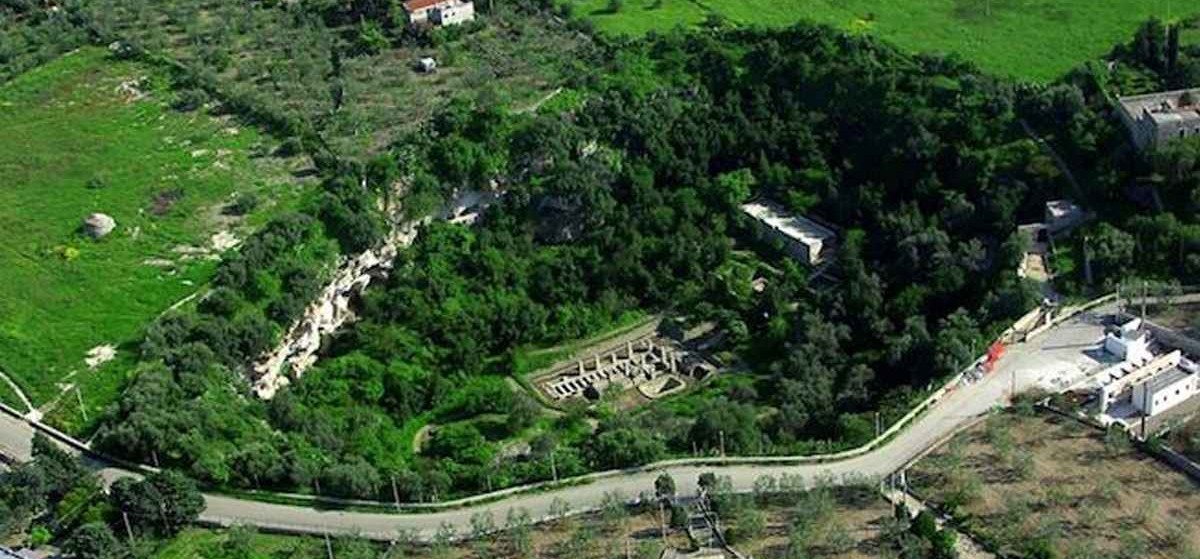



The large arch overlooking Corso Dante is the monumental entrance to the historic center of the city of Molfetta.
Looking up, it is not difficult to imagine the majestic doors that had to close the passage, while they rotated noisily on the hinges still visible. The ancient city, which has always been a bridge to the East, was built on an elliptical promontory which conditioned its urban development. The virtual walk starts from via Piazza, the main street, overlooked by 7 streets on each side: narrow, winding, sheltering from the north wind and in summer from the burning sun.
The herringbone plan, the result of the centuries-old urban building, has two connecting points, one consisting of Piazza Municipio and the other from the Cathedral of San Corrado, an ancient cathedral on the sea and a precious jewel of the Apulian Romanesque style. Walking along via Piazza you can see the streets animated by pretty shops, where it is not difficult to meet artisans at work and buy their artifacts.
Looking around you can see the minute balconies with romantic wrought iron railings, niches and bas-reliefs. On the right, here is the harmonious facade of the church of sant’Andrea, on which stand an elegant rose at the helm wheel, four high-reliefs of winged faces and the noble coat of arms of the de Judicibus.. As recalls an inscription on the cornice inside, in the 16th century this family created and equipped the church of the Visitation for itself.
A little further on, at the intersection with via Mammoni, a strange angular sculpture appears, almost a sphinx, and the exotic name of the street recalls the personification of the god of money Mammon, of Aramaic origin. In the lexicon and popular tradition, monstrous beings who acted as bogeymen to children are called mammons; and there are others on the portals of the historic center.
At the end of the main road, there is the arch of San Nicola, decorated with the frescoes of the Madonna dei Martiri, of San Corrado and San Nicola di Bari, dating from the 16th and 17th centuries.
Continuing on via Sant’Orsola, one runs alongside a series of buildings overlooking the sea which in the past had a defensive function.
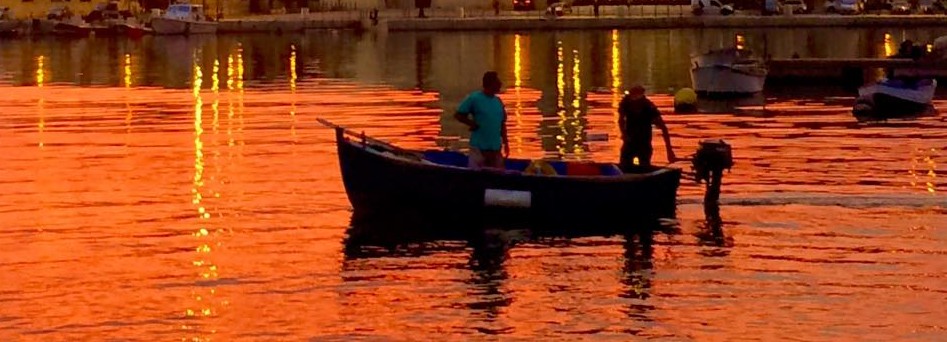
Through the Palazzo Galante Gadaleta you can access the Torrione Passari. Built in 1512, the fortified stone cylinder overlooks the sea and three mouths of fire on the bottom to defend the city against the attacks by the Turks, which raged in the Adriatic waters. Climbing the flights of stairs you reach the top of the Torrione and accompanied by the sea breeze with a glance, you embrace the entire Molfettese coast in a beautiful panorama.
Il Torrione is now home to contemporary art exhibitions. Continuing the walk, the Church of Santa Maria del Principe deserves a stop, more commonly known as the Church of Death, where the Archconfraternity of the same name buried the deceased.
Leaving the seventeenth-century church, a diamond-studded ashlar and a delightful bas-relief depicting the Madonna della Tenerezza embellish the prospect of palazzo Nesta. After passing the Aloe Garden, you are in Piazza Municipio. On the right Palazzo Giovene, an exuberant Renaissance building, with a richly decorated portal.
Inside are the Gallery of Contemporary Art and the Civic Siloteca. On the left a small entrance allows you to enter the Sala dei Templari, what remains of the church of the powerful monastic order. The outdoor places that are located in this square, once known as Piazza Castello, in memory of the fortified structure that once stood here, invite you to taste a cold drink or homemade ice cream. Nearby on via San Pietro there is the homonymous baroque church. It captures the contrast between the narrow lane and the imposing façade, also made so by the sumptuous bell tower in local stone.
The interior, with a Greek cross with a central dome, is embellished with refined eighteenth-century stuccos and lightened by coretti shielded by convex grates from which, at one time, the cloistered nuns attended the functions. The narrow alleys of the historic center reveal the spirit of the time that still animates these places with the valuable portals, courtyards, wells and fountains. From Piazza Municipio, skirting the ancient city walls, to the left you reach the majestic Cathedral and the sixteenth-eighteenth-century urban expansion district of the city, until you reach the Seminary Quay.
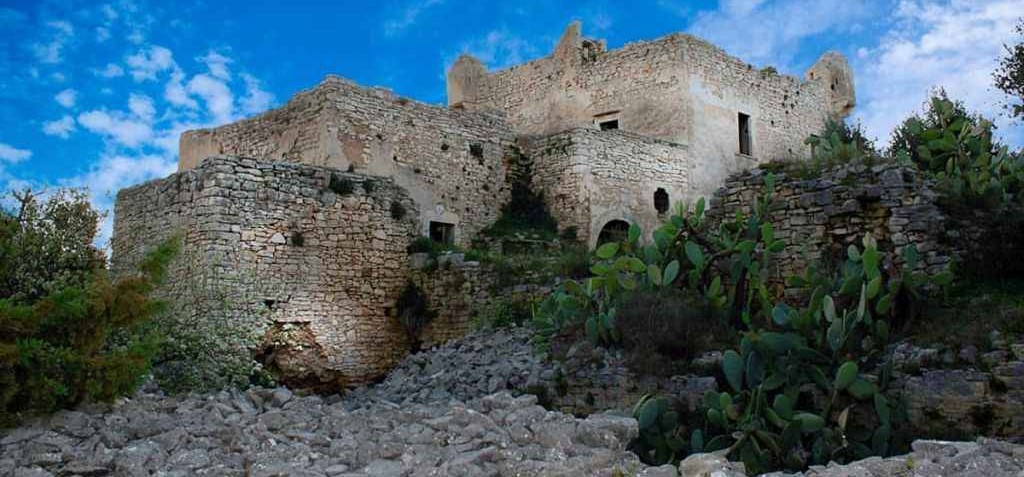
Here is the Cathedral of San Corrado with the white facade, the three domes and the two towers. The tower overlooking the sea was used for sighting and with smoke during the day and fire at night it signaled the presence of threats from the sea. From here you can admire the large basin of the port and see, on the opposite side of the cove, the Basilica of the Madonna dei Martiri with the adjacent Crusaders Hospital. The name is misleading, because the Crusaders never left these shores. Pilgrims who traveled to the Holy Land or who came from the East to Puglia and traveled the Via Francigena were welcomed there.
Here you can still stop, rest and admire the sunsets described also by Lord Byron, the English patriot who loved the East so much. To reach the Crusaders' Hospital, continue along San Domenico Quay. If you want you can stop in the new artisan chocolate shop that prepares high pastry specialties. If, on the other hand, you prefer to delight your palate with savory delicacies, continuing along via Madonna dei Martiri and following the scent of bread baked in a wood-fired oven and still warm Apulian taralli, you will reach an exceptional bakery where excellent sandwiches are prepared in a nice place on the corner with via San Francesco d’Assisi. Turning on viale dei Crociati and at the end of the road is the Basilica of the Madonna dei Martiri.
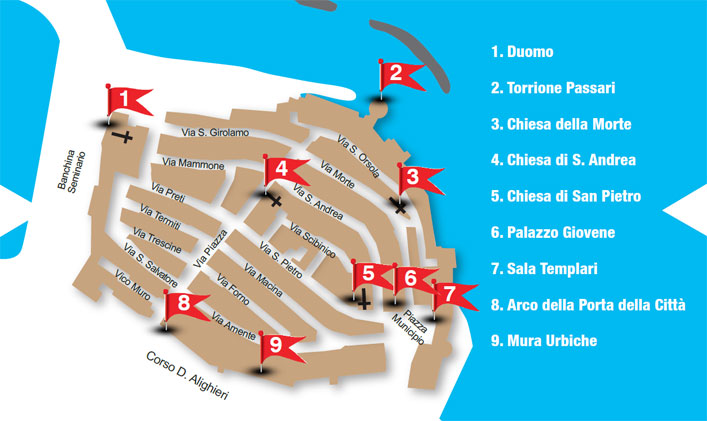
The medieval center is located in the peninsula called Sant'Andrea, from the ancient church of the same name, mentioned for the first time in notary documents in 1126. The town tradition, which traces the origins of Molfetta to the Greco-Roman age, has no documentary support. The sources, dating back to the X-XI century, offer the image of a village, in which there are already several churches, which is surrounded by walls to the south and north, on the sea, from a building, an interesting housing-defensive system whose structure is still visible. A series of parallel roads runs east-west and connects to the two poles of the Cathedral and the site of the Castle (destroyed in 1416), today Piazza Municipio. This road network is cut in the North-South direction by via Piazza, the main street of the old center, the result of the progressive building densification which, between the 11th and 17th centuries, occurred in the stalls, the ancient widening of which the documents speak. The most significant buildings, located mainly along the perimeter of the village, date back to the period after 1529, the year of the French Sack, which produced significant damage to the architectural and documentary heritage of the city. It is proposed to enter the ancient city through the door that opens onto Corso Dante.
Via Amente:
It is distinguished by the presence of various noble palaces dating back to the XVI-XVII century, set against the walls in a compact structure. In the buildings of particular interest are the finely decorated portals, the entrance halls with large stairs, the loggias, the well-made wells. The Palazzo de Luca is at No. 10, Palazzo Tattoli at No. 14, Palazzo Passari Lupis at No. 32, Palazzo Monna at No. 48.
Piazza Municipio: (ancient Castle square)
Noteworthy is the Renaissance facade of Palazzo Giovene, now the seat of the Municipality which integrates the medieval hall of the Sala dei Templari and what remains of the properties of the Church of San Nicolò of the "House of the Temple".
In Via San Pietro: to visit is the seventeenth-century church of San Pietro with a high bell tower, built on the pre-existing medieval church (inside paintings of the Giaquinto school); it is flanked by the massive structure of the sixteenth-century convent of the Benedictine nuns.
Via Sant'Orsola: on the north side the structure of the ancient building facing the sea can be seen in the compactness of the buildings. Also in this street there are numerous noble palaces with rich and decorated entrance halls. At number 13, Palazzo Galante Gadaleta, there is access to Torrione Passari, a cylindrical sixteenth-century fortification with which work was carried out on the defensive structures of the city to make them suitable for new firearms: the tower for the defense of the city was built «in the band of the sea Passaro "; Passari is the name of the powerful family who lived in the nearby buildings on the sea.
Via Piazza: (the widest and liveliest street in the Centro Antico)
It is accessed through the large arch of the city gate, the only one left of the medieval walls; the large stone hinges are still intact. In front of the arch of via Forno, in the small open space, there was the Seat of the People, of which no traces remain and the Seat of the Nobles at n.10 and 12 (there are traces of the walled arches and the coat of arms of the City surmounted by the image of the Madonna dei Martiri, patron of Molfetta). Interesting is the ancient church of S. Andrea dating from the twelfth century and remodeled in the seventeenth and eighteenth centuries.
Vico Muro: narrow access road to the panoramic walk on the ancient walls of the village.

Molfetta was closed to the south by the walls and to the north by the "litus maris" on which stood tall and narrow houses as a barrier which, without interruption, formed the typical building of many Adriatic cities. The south walls were marked by several bastions that followed one another regularly. The main gate in the sixteenth century was surmounted by the clock tower which was then knocked down, the other smaller one, called "Porticella" near today's Piazza Municipio, was destroyed in the late nineteenth century. In the seventeenth century the medieval walls exhausted their defensive function as the city began to expand and at the end of the eighteenth century the University authorized the emptying of the embankment in the body of the walls to obtain the shops that were to embellish the "street of the village".
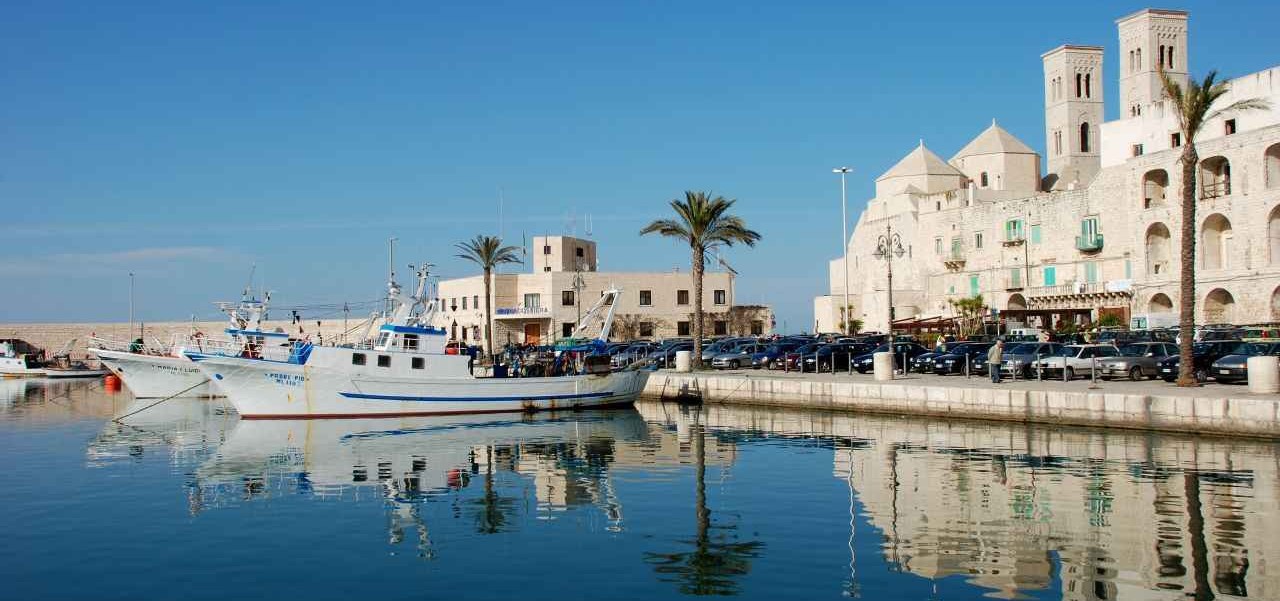
It was built between the twelfth and thirteenth centuries. It is one of the largest Apulian Romanesque churches with three domes in axis and two towers, one for sighting, the other for bells. The current entrance to the sea was opened in the 1940s, but the true ancient entrance is the one in the south. The oldest part is the apse, characterized by a theory of round arches that intersect, in an arabesque style. Inside, the presbytery area shows traces of the ancient pictorial decoration, the original polychrome floors and the sculptural decoration. Among the most important sculptural pieces: the stoup called 'of the Saracen', the precious capitals and the sculptures at the base of the apse dome.
